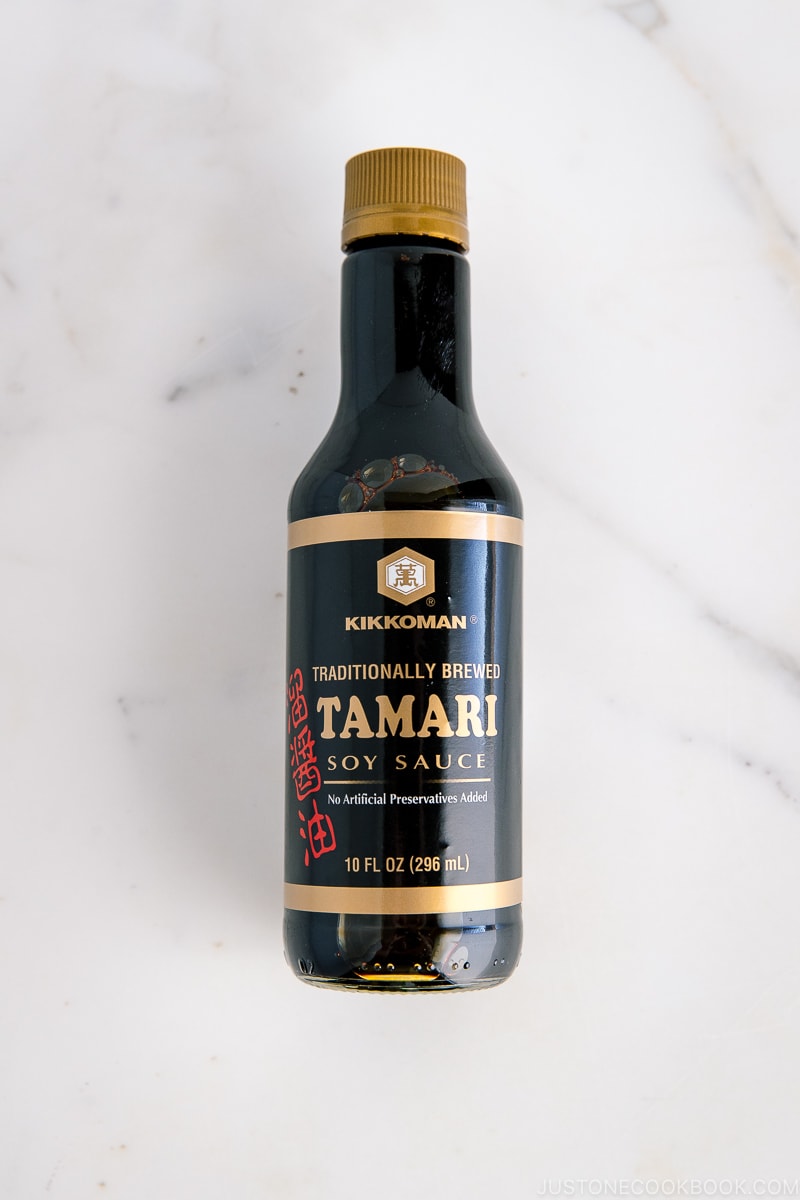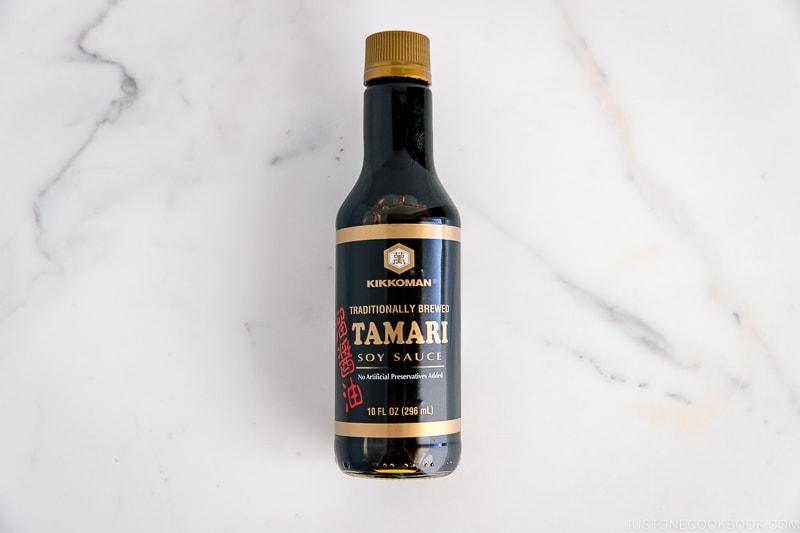Tamari is derived from soybeans and wheat and has a smoother and less salty umami flavor than regular soy sauce. It’s a regional soy sauce from central Japan.

Tamari shoyu is a type of Japanese soy sauce produced and used in Japan’s Chubu (central) region (Nagoya area). It is rich in protein and contains little or no wheat. It is thicker, richer, and darker than soy sauce and has a mellow flavor. The Japanese use it for dipping, seasoning, and marinades.
Table of Contents
What Is Tamari
Tamari is a soy sauce formed as a byproduct of miso paste. During the fermentation process of miso making, a liquid byproduct accumulates around the paste, hence tamari (溜まり) “to pool.” The ingredient list is simple: just soybeans, salt, and water.
It’s a distinctly flavorful ingredient that’s more than just a gluten-free alternative to traditional soy sauce.
What Does It Taste Like
It has a complex, savory depth with a rich and thicker consistency, less sodium, and more umami than regular soy sauce.
What’s The Difference Between Tamari and Regular Soy Sauce
Regular soy sauce contains wheat. It’s made by brewing and fermenting steamed soybeans, salt, wheat, and water. The mixture is pressed, filtered, and bottled to make soy sauce.
Tamari contains just soybeans and salt. It is higher in soy protein with a darker, thicker, and richer flavor than soy sauce. It’ll darken your food more than regular soy sauce and tends to be more expensive.
If you’re looking for a gluten-free alternative to soy sauce, tamari may not be the best choice in terms of price. Not all tamari is gluten-free, so check the label if it says “soy-free.”
How To Use
It’s often used as a dipping sauce, marinade, or seasoning appetizers. You could substitute it for regular soy sauce when eating sushi or sashimi or drizzle it on tofu. Due to its high price point, I don’t recommend using it for cooking, such as stir-fries, unless the recipe specifically calls for it.
Where To Buy
With the popularity of Japanese cuisine, you can find it at conventional supermarkets, Japanese/Asian grocery stores, and health food stores. It’s sold in glass or plastic bottles.
How To Store
Store unopened bottles in a cool and dark place.
You can store opened bottles in the refrigerator or your pantry.
Substitutions
While you can use regular soy sauce and tamari interchangeably, tamari has a thicker texture, so the final dish may differ.
You could also use coconut aminos or liquid aminos, but I don’t recommend this as it has a different flavor profile.
To cook Japanese food with integrity, it’s important to use Japanese soy sauce. Soy sauces from other countries are made for their respective cuisines. The taste and uses can differ significantly, which will alter your cooking. If you wish to achieve the best flavors and consistency in Japanese dishes, use Japanese soy sauce.

Health Benefits
Tamari is high in protein, about two grams per tablespoon. Like regular soy sauce, it is a good source of antioxidants, protein, vitamin K, and isoflavones. It also contains little to no additives. It’s still high in sodium, so use it in moderation.
FAQs
Q: Are there different varieties of tamari soy sauce?
There are no varieties of tamari soy sauce, like a dark variety similar to soy sauce.
Q: Does tamari soy sauce contain MSG?
Tamari does not contain MSG or other additives. Most traditionally brewed soy sauce does not contain MSG either.
Wish to learn more about Japanese cooking? Sign up for our free newsletter to receive cooking tips & recipe updates! And stay in touch with me on Facebook, Pinterest, YouTube, and Instagram.









